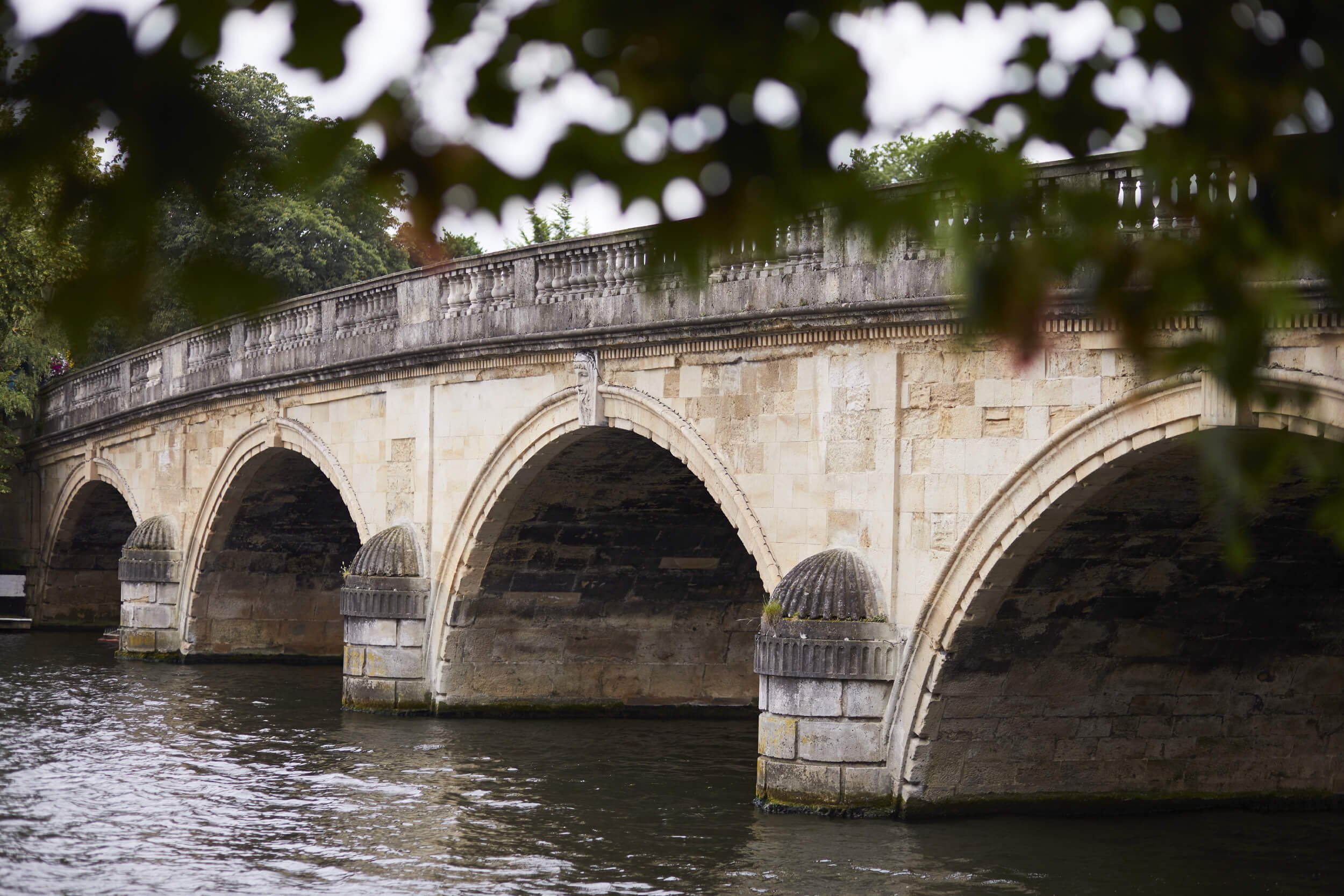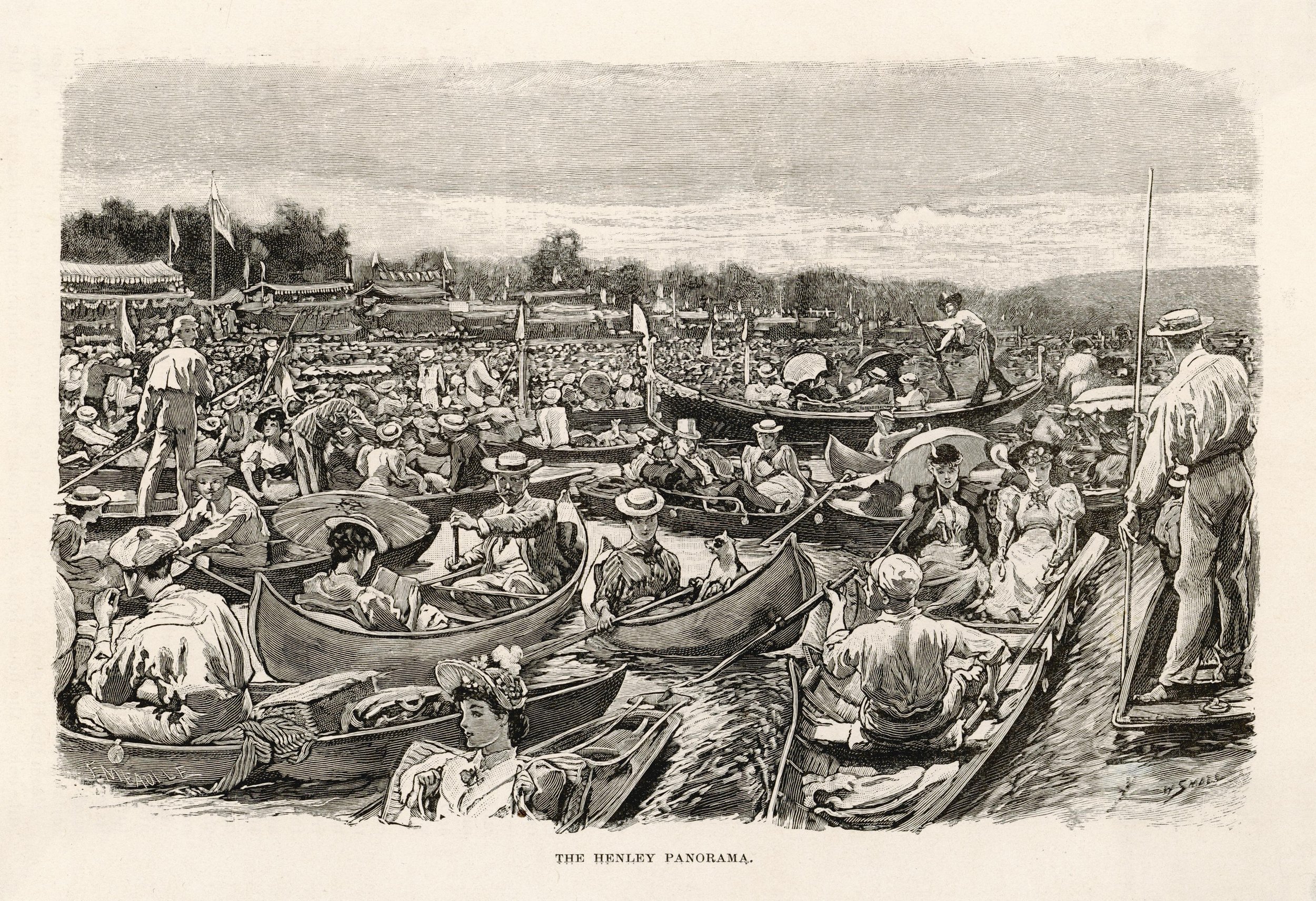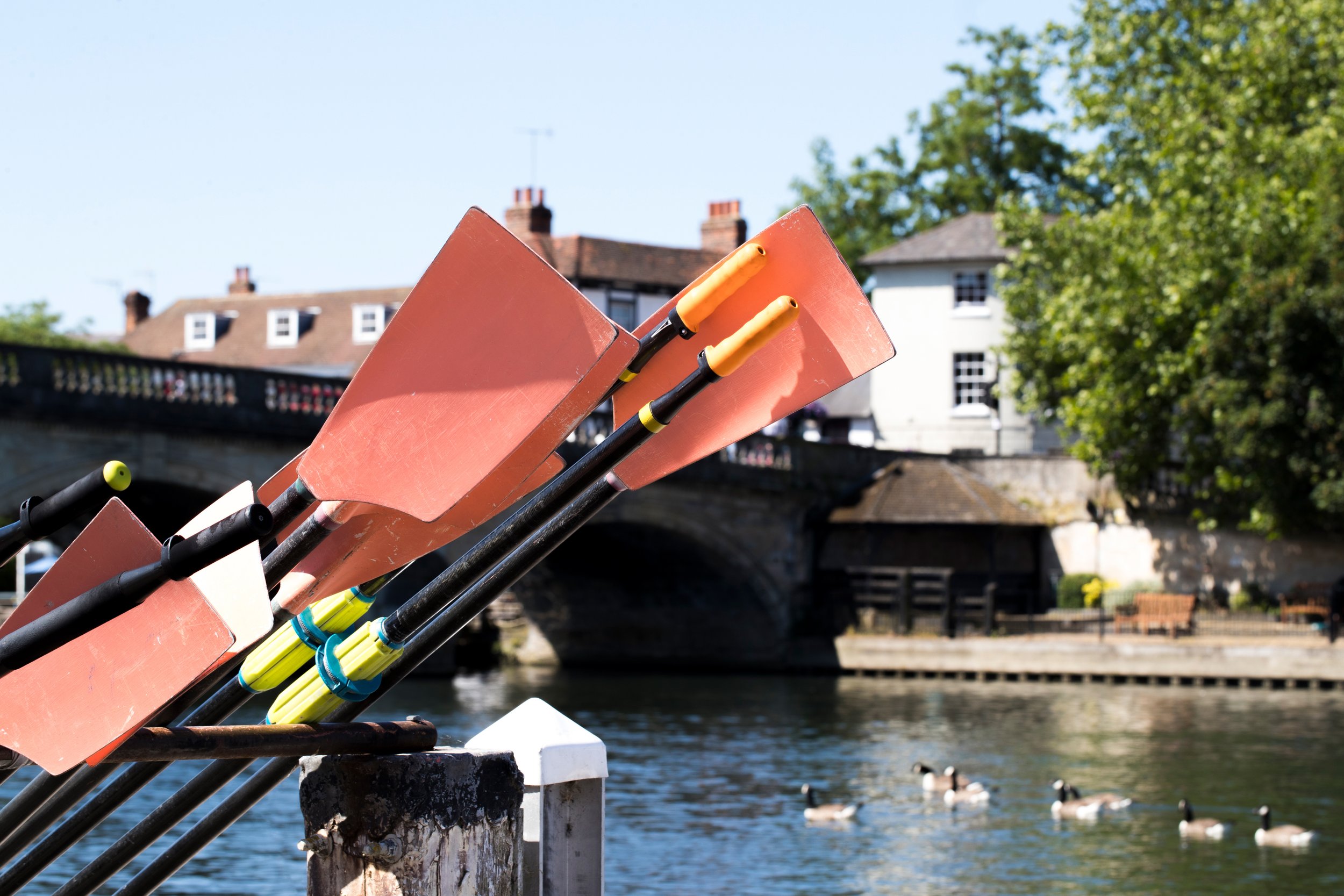
In the heart of the English countryside, just an hour from London, the picturesque town of Henley sits beside the River Thames, where Oxfordshire meets Berkshire and Buckinghamshire.
Early Henley: A Crossing Point
The first official record of Henley is from 1179 when King Henry II bought land here ‘for the making of buildings’ – but people have lived in Henley since the second century AD or earlier. Henley’s first residents were probably Roman Britons.
As well as nearby archaeological sites, reflections of the area’s Roman past can also be found on Henley Bridge, which includes prominent carvings of the Greco-Roman god Isis facing south, and Tamesis (or Father Thames) facing north.
Roman historian Dion Cassius described a bridge over the Thames, where the Romans crossed pursuing the Britons in 43 AD – some believe this might have been at Henley. Whether or not that is true, there has certainly been a crossing point in Henley for milenia: a bridge is recorded in the Patent Rolls of 1232; while earlier records indicate a ford known as ‘Bockerinsforde’.
The Bridge
The current bridge was completed in 1786, built of Headington stone and designed by William Hayward of Shrewsbury. The Isis and Tamesis sculptures, facing upstream and downstream respectively, were created by Anne Seymour Damer, and the original models can be seen in Henley’s nearby River and Rowing Museum.
The previous bridge, which stood slightly upstream from the existing one, was swept away by floods in 1774. It had already been declared dangerous in 1754 having been damaged in the English Civil War.
The Church & Market
Completing Henley’s famous vista, and sitting directly opposite Hart Street Tavern is St Mary’s Church. The current building dates from the 13th century, but a church has probably stood on the site since around 1000 AD. The main tower was added in the 15th century.
Henley’s Thursday market has been happening for over 850 years, and may have been granted charter by King John.
From the site of the market (Falaise Square) the main street (Hart Street) aligns with the church, not with the bridge. This might indicate that the church existed before the bridge, or that the bridge was originally further upstream than its current position.
Henley in the Civil War
In 1642, the only recorded skirmish of the Civil War in Henley took place where Duke Street meets Hart Street. Known as the Battle of Duck Street, a gun was set-up by Parliamentarians defending Henley from the Royalists, who were approaching along the Reading Road. Burial records show that six soldiers were killed of whom four were 'slaine with the discharging of a Canon as they marched up Duck Street to assault the towne' and were subsequently buried in the churchyard.
Henley changed hands several times during the Civil War: at one point Prince Rupert was in the town, while Sir John Byron's Parliamentarian infantry were at Fawley Court. It was a tense time.
Trading Town
Henley prospered and grew in the 17th and 18th centuries, thanks in large part to the success of local malt and glass manufacturing.
The Thames provided easy transport to London for timber from the Chiltern Hills, alongside corn and wool from the rich agricultural land surrounding the town.
In 1711 W.H. Brakspear began brewing beer in Henley. The Brakspear family was distantly related to Nicholas Breakspear, who became Pope Adrian IV in 1154 – the only Englishman to become Pope.
Taming the River Thames
In the late 18th century, the Thames Navigation Commission began building new locks (and renovating existing locks) along the Thames, improving navigation for river traffic and allowing a degree of control over the flow.
The Henley reach of the Thames includes a natural straight section, almost two miles long, running from Phyllis Court Club to Temple Island. About halfway along the straight is the impressive Fawley Court designed by Sir Christopher Wren and landscaped by Lancelot 'Capability' Brown.
Boat Racing in Henley
The straight course of the river downstream of Henley lends itself to racing boats. The very first Oxford-Cambridge Boat Race (“The Boat Race”) was held in Henley in 1829. Oxford won that time.
The world-famous Henley Royal Regatta began ten years later in 1839, and is still one of the world’s most prestigious rowing events – attracting international competitors and fans alike every summer.
Today, Henley also hosts the Henley Women's Regatta, Henley Masters Regatta, and Henley Town and Visitors' Regatta.
The town is home to several rowing clubs, including Leander, Henley and Upper Thames, as well as various canoe, kayak and dragon boat clubs.
Leisure Town
With the success of the Regatta, and the introduction of the railway in 1857, Henley was fast becoming a destination in its own right: day trippers and weekenders came from London by train to enjoy the town and the river.
The Thames Valley also features prominently in literature: from Three Men in a Boat by Jerome K. Jerome to The Wind in the Willows by Kenneth Grahame. Not to mention appearances on screen including Midsomer Murders, Inspector Morse and Poirot.
“Believe me, my young friend, there is nothing - absolutely nothing - half so much worth doing as simply messing about in boats.”

Henley Regatta 1902
By Sir John Betjeman
Underneath a light straw boater
In his pink Leander tie
Ev’ry ripple in the water caught the Captain in the eye.
O’er the plenitude of houseboats
Plop of punt-poles, creak of rowlocks,
Many a man of some distinction scanned the reach to Temple Island
As a south wind fluttered by,
Till it shifted, westward drifting, strings of pennants house-boat high,
Where unevenly the outline of the brick-warm town of Henley
Dominated bu her church tower and the sheds of Brakspear’s Brewery
Lay beneath a summer sky.
Plash of sculls! And pink of ices!
And the inn-yards full of ostlers, and the barrels running dry,
And the baskets of geraniums
Swinging over river-gardens
Led us to the flowering heart of England’s willow-cooled July.

“There is no river in England like the Thames—no river in the world so full of quaint and picturesque surprises.”

